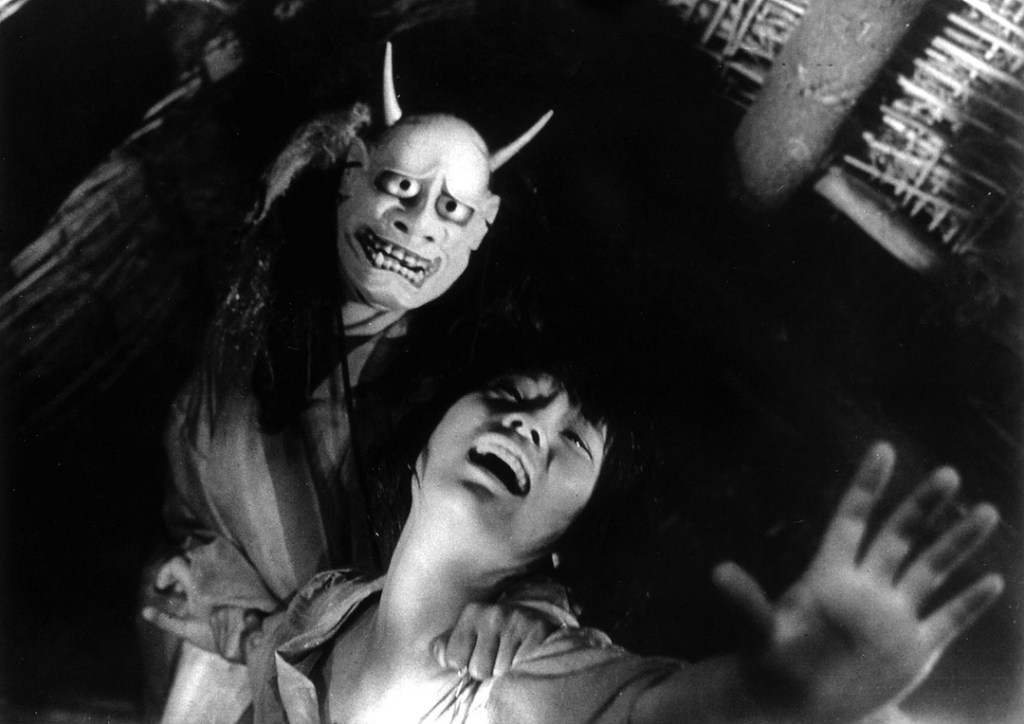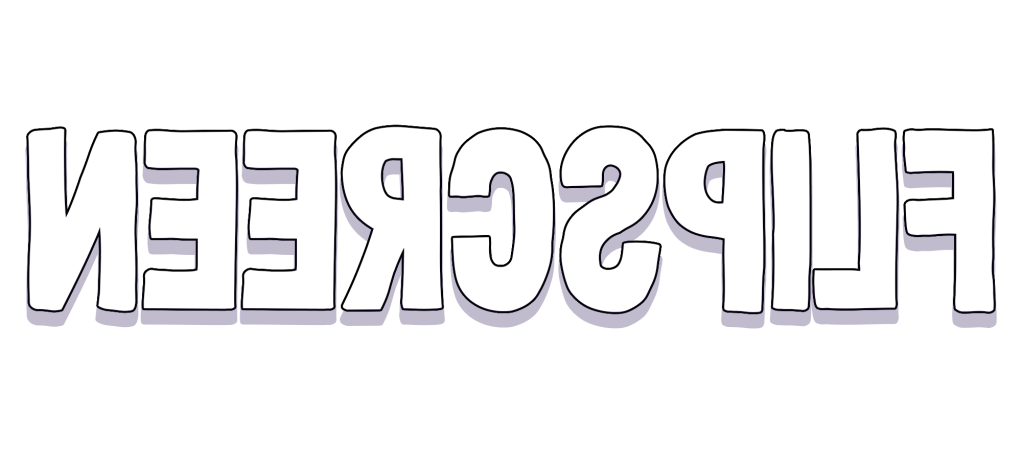Onibaba and Kuroneko – both films from Japanese writer and director Kaneto Shindô – are excellent examples of how horror and the supernatural can make reality more understandable. Neither are horror movies in the strictest sense of the genre, but rather they take horror itself as their subjects. They investigate the darker sides of humanity that are taken for granted, accepted as a by-product of something larger, and too-often left anonymous and undiscussed. Onibaba and Kuroneko do not seek to instil fear through a series of frights and scares. Instead, they plunge their hands into the horror of reality and prove that humanity already has plenty of things to be scared of.
For those who haven’t heard of him before, Shindô is something of a legend in Japanese cinema. Beginning his career as a scriptwriter, under the tutelage of Kenji Mizoguchi (Ugetsu Monogatari, Sansho the Bailiff), Shindô would go on to amass over 200 writing credits, working right up until his death at the age of 100. A committed socialist, his films deeply sympathised with those living in poverty and frequently featured strong female leads. This was in response to what he saw as a post-war crisis of masculinity, in which women were making bigger and bigger strides in society. While this was perhaps most obvious in the aptly named comedy Strong Women, Weak Men (1968), it was Shindô’s addition of the supernatural to his usual themes that won him world-wide attention.
Both Onibaba and Kuroneko follow an anonymous mother/daughter pair as they are subjected to, transformed by and learn to exploit the horrors of war. Set during Japan’s feudal era both films use their setting to present society as a terrifying blend of violence and sexuality, where nothing can escape the all-encompassing effects of war, conflict and division. His use of the supernatural (a monstrous mask in Onibaba, a pair of vampiric black cats in Kuroneko) adds an interesting dimension to his narratives. What could have been a pair of clear-cut but bleak depictions of human cruelty, instead find themselves in a far more fascinating and complicated moral space.
Onibaba begins with a field of rushing reeds, blown back and forth by the wind they make the ground look like it’s writhing. Focus then shifts to a deep pit, which – the opening titles explain – contains an ancient darkness. It’s an oppressive location to say the least, and with Hikaru Hayashi’s soul-shaking score of frenetic drums and blasting horns, there is the overwhelming sense that this is an evil place. Yet the film quickly reveals that this is also a place where people live and work. The field is over-run because the current war prevents farmers from tilling it. A mother and her daughter-in-law (Nobuko Otowa and Jitsuko Yoshimura), are left impoverished by the absence of their son/husband and are unable to grow food. Instead, they hide in the reeds picking off any unfortunate samurai who pass by. Stripping them of their armour, they bring it to their nearest neighbour; a thief who does nothing other than drink and accept gifts in exchange for his stolen sacks of grain. Shindô successfully shows that while the place may be evil the morality of its protagonists, isn’t as clear cut.

“The world has been turned upside down,” Hachi (Kei Satô), another neighbour who manages to make it back from the fighting, says of the war. This inverted world is the space which Shindô chooses to investigate. Having accepted that the son will not return the women find themselves in very different positions of power. Free of the bond to her husband, the daughter begins an affair with Hachi visiting him nearly every day, while the mother who now has no hold over her daughter-in-law – grows increasingly fearful that she will be left alone and unable to survive. That is until she comes into possession of a cursed demon mask. Scared for her own survival, the mother chooses to use fear against her daughter-in-law, donning the mask and jumping out of the reeds every time she sneaks off to see Hachi. With mad, staring eyes and sharp teeth, the mask is genuinely creepy, and the sight of it emerging from the reeds and rushing towards the camera, even by today’s standards, is deeply unsettling. Of course, this is still a cursed mask. The mother finds that once it’s on she cannot take it off. The only way to remove it is to break it, revealing that her face is warped beyond recognition, causing her daughter to finally run away from her rather than the demon. The demon mask is just an artifice, but it turns its user into the real thing.
Where Onibaba opens on a symbol of evil, Kuroneko opens on an act of senseless brutality. A group of wandering samurai quietly emerge from a forest and enter a small house. There, they find a young woman and her mother-in-law (Kiwako Taichi and Otowa once again); similarly waiting for their husband/son to return. The samurai rape and murder the women before they then, with a chilling lack of dialogue, walk silently back into the forest. The following night, the mother and daughter return from the dead as black cat spirits, and they are hell-bent on killing any samurai they can find. They use the samurais’ own lust to lure them back to their home, entertain them with music and sake and then cut open their throats to drain their blood. While war is waged with the intent of bringing about peace, it has succeeded only in creating more monsters and the film is very much on their side.
Other than diving straight into the supernatural, what sets Kuroneko apart from its companion piece is its theatricality. The women use performative hyper femininity in order to lure in the men. They are never seen without beautiful dresses, always delivering lines with a coy shyness and dancing in an exaggerated (and near-hypnotic) display of beauty. Living by a code of self-importance and high-minded honour, the samurai assume that the women are attracted to their superiority. They make a big show of appearing strong and selfless as they’re being led back to the house, while their true intentions couldn’t be more obvious. Shindô shows this same scene over and over again with a number of different men, allowing the dramatic irony of the situation to build, until the perfect image the men have crafted for themselves is completely stripped away. The men saw in these women exactly what they wanted to see. As well as an opportunity to prove themselves as powerful men. It is exactly this dangerously limited thinking that led them to their gruesome deaths. While, in a wider sense, the women’s trick actually exposes the men’s performativity, the high morals of the samurai are revealed to be a thinly veiled cover for their violent and baser desires. It delegitimises the power of every subsequent male character.

Both films manage to break, or at least complicate, a perceived reality. Onibaba (literally meaning demon hag) confronts the demonisation of the poor. Seen, very clearly, in one particularly short scene towards the beginning of the third act. Hachi stumbles across more strangers in the reed field; a dying, old woman accompanied by her much younger daughter. Covered in mud and blood, starving and unable to speak; the mother’s appearance, in particular, is deliberately unsettling. They’re given no lines and only appear in one shot, but the effect is startling, like a demonic apparition. They shock the audience with a brutal look at the fallout of war. Hachi averts his eyes and quickly runs away. The scene is short but it clearly establishes this mother and daughter as foils for the central pair. They represent a vision of their future and gives an explanation to why the mother is so fearful of it. Even with the war being fought miles away, the people living in this field have suffered greatly from it. The longer they have to live in this situation, the more of their humanity they’ll see stripped from them. Even while the mother uses fear to control her daughter and is ostensibly the villain of the film, this small scene manages to provide sympathy for her. What makes the mask scary is what lies underneath it; the reason it has to be put on in the first place and what effect it has on those who wear it. From the beginning, Onibaba makes it clear that looking at this darker side of humanity is like staring into a deep, unknowable pit.
On the other hand, Kuroneko challenges the reproduction of performative gender roles. While there’s certainly a macabre delight in watching the women exact their revenge, as the film progresses it grows more tragic. As powerful as the women now are, they find that they are once again stuck performing roles. In order to exist as the vampiric spirits, they must repeat the same ritual every night. They begin to wish they were treated with compassion rather than fear and hate, yet the samurai never learn to change. They respond to the threat by doubling down on their pomposity, determined to be made a hero by bringing the spirits to a violent end. Like Onibaba the film ends ambiguously; unclear if justice or revenge were ever properly served. Despite the film’s clear passion and message, it still leaves the audience lost in the woods, with no idea how to get out.
Evil masks and black cats are part of horror folklore the world over. Their presence is symbolic, used to represent far larger concepts of fear, evil and the unknown. Shindô has made two excellent films which explore these larger concepts. When horror takes the time to step back and show a wider world of cause and effect it can unsettle the audience far more deeply than mere shock and awe techniques. These are not horror stories that can be brushed aside as a bad dream. They push beyond that and instead offer two stories which raise myriad problems in human behaviour and leave the audience with no solutions. Those who would like to explore this unknown space, who want to push through to the other side of horror, would do well with the chilling double-bill that is Onibaba and Kuroneko.
Header image courtesy of Toho Studios


Leave a comment